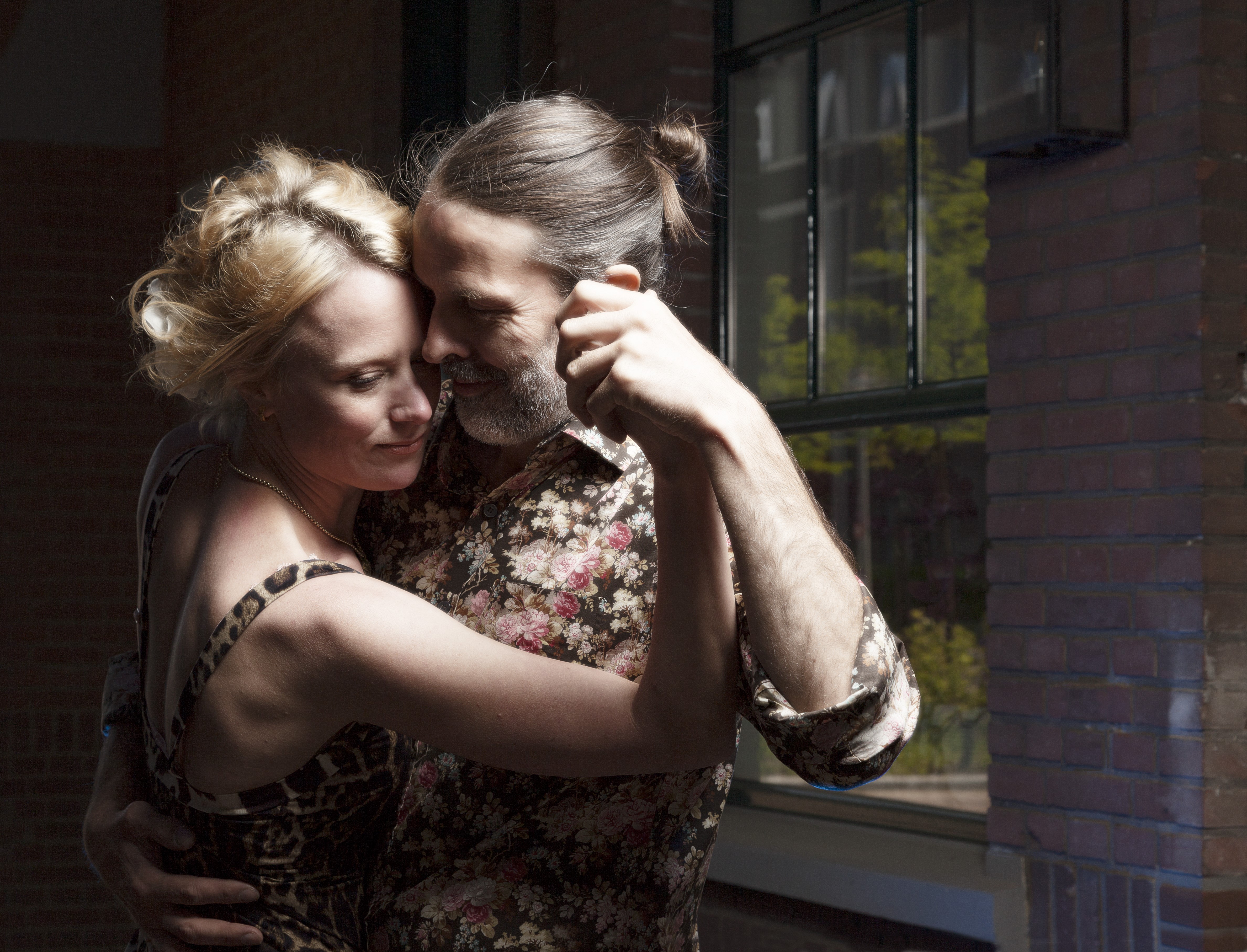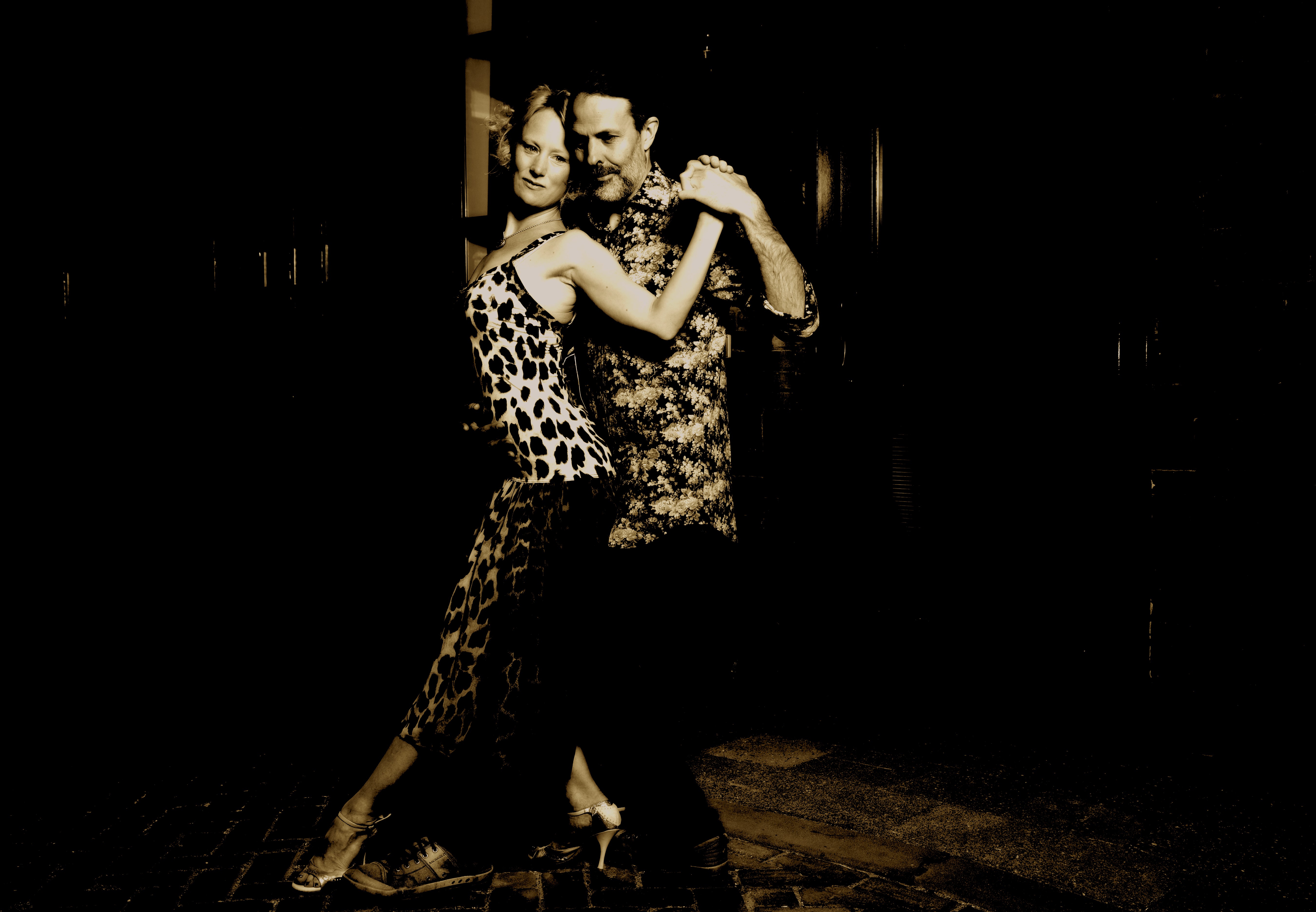 Tango as a spiritual practice
Tango as a spiritual practice
Interview with Lizelot de Stigter by Marij Faessen. 2013
Can you tell something about the time before starting with Tango?
At the age of 9 I started professional ballet training. This means training at least 3 hours every day besides hours dancing in school. When I was seventeen auditioned at Pina Bausch’s in Wuppertal. I made it through to the last eight dancers. Pina Bausch then said to me: “I do want you in my group, but is this really what you want? You are so young.” At that moment, I suddenly witnessed myself standing at a crossing in my life. It must have been the brightness of her eyes and her loving way of looking at me causing me to see clearly my position in life I arrived at. I could see it was like arriving at the top of a mountain after a long path of big efforts and then realizing I had reached the top, but it was of the wrong mountain…I suddenly understood that I didn’t belong to the theatre world. My answer was no. She made me promise however that I would not quit dancing and finish my dance education, and said that I would be welcome if I would decide Iater to join her company. It was difficult to let myself go back down that mountain to start finding out what would then be my path. I had no idea, everything was open again.
When and how did you encounter the Tango?
I then went to finish my dance education at the Anne Teresa de Keersmaeker dance academy in Brussels (P.A.R.T.S.). In that same year, at the age of 18, I discovered the Tango. What a revelation that was! Tango was a completely new experience for me. Tango taught me lessons which I had always longed for as a dancer. Through this way of moving authenticity and beauty come from within. To experience this, your attention has to be centered inside at the heart of the experience, rather than on the outside form. This was the first time that I could embody and show the beauty of pure being.
But with all of your classical training as a dancer the Tango must have been easy for you, wasn’t it so?
No not at all. At the beginning my body was still loaded with old patterns and illusions around myself. The Tango became my spiritual practice.
Tango invites us to letting go of old patterns and linear thinking in order to achieve freedom of movement. Our thinking divides everything in little parts. For example: yesterday, today and tomorrow. If you let this concept go, you can be in the eternal now. You move from a world of multitudes to the reality of unity. Because you dance with a partner, you have a chance of re-discovering unity, not only with your partner, but also within yourself.
The untangling of old patterns in the dance was a painful process. Letting go was quite a struggle. I wanted to let go everything, the concepts, the patterns and ideas about myself, which I had constructed in my past. Totally letting go my past, also in dance. It is like deeply falling in love with truth, with reality. This is also a physical process. A purification, a cleaning. Some people go into psychotherapy to find peace with their past, but dance is also capable of doing this by learning how to move in a harmonious way. Not to react out of your old habit of fear, but let in the new things, in ‘the now’ and let them do their work in you. And then there might be resistance in you, when you encounter your deepest fears, barriers and attachments to certain attitudes. They all float to the surface. It kind of feels like losing your identity, to which you have become used and emotionally attached.
In your teaching I notice that you easily switch between the feminine and the masculine role. Can you tell us something about how you developed this?
When I started learning Tango I dived fully into the feminine principles. It was a big gift to discover the power of the feminine, rather than thinking about it being ‘just’ passive. I became conscious of the feminine within me and through Tango was able to let that side of me flourish, also in my life in general. In teaching I started seeing how women are tend to move into a victim role when their feminine presence is not awakened enough. We tend to think that this is the result of suppression of the feminine in the world, but this suppression seems to be a pattern we have adapted within our own system. Both in women and in men.
By becoming deeply conscious of the feminine it was like meeting with the pure masculine from there, and understanding that principle by embracing it. This sounds magic, and yes…it is. It is a thrilling experience to feel the feminine and masculine principle join within us. From that moment on I could teach this one dance from the two opposite sides.

How do you work with these principles in your teaching?
Healing Tango is very much about discovering, exploring, and balancing both the feminine and the masculine within us. In the classes, we play with both roles to give us different perspectives in life of how we interact and create from there.When someone has difficulties finding clarity and determination, or feels powerless, it can be really helpful for him or her to explore moving from the leading, masculine side. On the other hand, when one has difficulties with surrendering and trusting, or closes down when in contact with the other, moving from the receptive feminine side can be healing and bring deep trust within.We also learn both deep listening, which can be seen as a feminine aspect, and ‘speaking’ or clear expression which is a masculine quality. Masculine qualities move from in to out, and feminine qualities from out to in. In the classes we explore the dance between them.
Can you say something about the importance of a right posture?
Often dancers ask me if I can help them correcting their dance posture. Well, what doesn’t work is to correct somebody’s posture when it is still connected with their past. Only if somebody experiences and feels him or herself in a different way, the posture will change. It is deeply connected with our life attitude. In a dance class I hand out feelings and experiences in the form of a movement to people, so that they are able to rebuild their posture in a harmonic way. It is about coming into alignment. I am always deeply touched when I see it happen. People start feeling happy and show their true beauty.
Really, the more you see some people as they really are, the more beautiful they become.